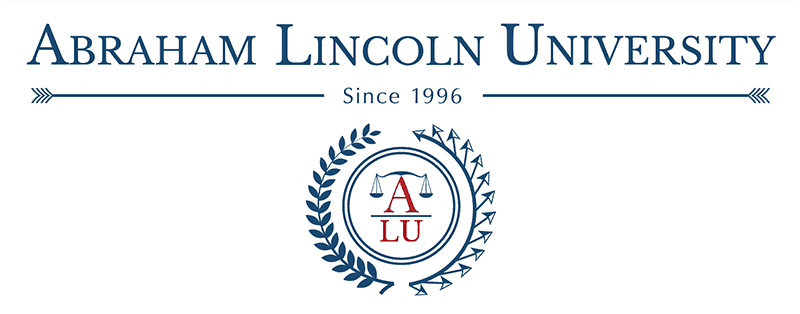If you have been injured because of somebody else’s negligence or fault, whether in a car accident, from a defective condition on that person’s property, or in some other way, you have the right to seek financial compensation for your injuries. You can potentially obtain this compensation by pursuing a personal injury claim against the person who was at fault for your injuries and/or that person’s insurance company.
In order to achieve a successful outcome in any personal injury case, you need to establish that another party was at fault for your injuries. Different states have different standards regarding the amount of fault that is considered compensable, as we shall see here. In many of the examples throughout the article there may be exceptions with how individual states apply their respective fault systems. The following is meant to express the general outlines of these systems and how they might impact personal injury claims.
Pure Contributory Negligence Rule
Fault determines which party pays for any damages resulting from an accident. While there are cases in which one party is totally at fault while the other party is totally blameless, there are other situations where establishing fault is not so simple. Different states have different rules about the amount of fault for which one can receive compensation.
Some states operate under a pure contributory negligence rule. Pure contributory negligence rule is a defense that holds that a damaged party cannot recover damages if it is even 1% at fault. This defense is often criticized as being too harsh on the plaintiff because the slightest amount of contributory negligence for an incident bars all recovery, no matter how wrong a defendant’s actions might be. Only four states apply the pure contributory negligence rule:
- Alabama
- Maryland
- North Carolina
- Virginia
While the District of Columbia also operates under the pure contributory negligence rule (since 2016), it has applied a modified comparative fault over 50% bar rule for pedestrians and bicyclists, detailed below.
Pure Comparative Fault Rule
Other states have adopted the more lenient pure comparative fault rule. Under the pure comparative fault rule, a plaintiff’s negligence in an accident will not totally bar recovery, but it will reduce the amount of damages that the plaintiff can recover based on that plaintiff’s percentage of fault. The pure comparative fault rule allows a damaged party to recover damages even if it is 99% at fault, though the recovery is reduced by that damaged party’s degree of fault.
Twelve states recognize the pure comparative fault rule, including:
- Alaska
- Arizona
- California
- Florida
- Kentucky
- Louisiana
- Mississippi
- Missouri
- New Mexico
- New York
- Rhode Island
- Washington
Modified Comparative Fault Rule with a 50% Bar
Some critics argue that the pure comparative fault system is unfair because it allows parties who are primarily at fault to recover some portion of their damages from defendants who are less at fault. Modified comparative fault systems, where each party is held responsible for damages in proportion to its own percentage of fault until the plaintiff’s negligence reaches a certain designated percentage, either 50% or greater than 50%, is a compromise between extremes. Once a plaintiff’s own negligence reaches this percentage bar, then that Plaintiff can no longer recover any damages that he or she has suffered.
Ten states currently follow the modified comparative fault rule with a 50% bar. Under this rule, a damaged party cannot recover damages if it is considered 50% or more at fault. If the party is considered less than 50% at fault, it can recover damages, but the amount of its recovery is reduced by its percentage degree of fault.
The ten states with the modified comparative fault rule with a 50% bar include the following:
- Arkansas
- Colorado
- Georgia
- Idaho
- Kansas
- Maine
- Nebraska
- North Dakota
- Tennessee
- Utah
Modified Comparative Fault Rule with a Bar Over 50%
Twenty-three states also operate under a modified comparative fault rule, where the threshold for the designated percentage degree of fault is over 50%. Under this rule, a damaged party cannot recover compensation if it is considered more than 50% at fault, but the party can recover if it is considered 50% or less at fault. In this case, the amount of recovery would also be reduced by the party’s determined degree of fault.
Twenty-three states use a modified comparative fault rule with a bar over 50%:
- Connecticut
- Delaware
- Hawaii
- Illinois
- Indiana
- Iowa
- Massachusetts
- Michigan
- Minnesota
- Montana
- Nevada
- New Hampshire
- New Jersey
- Ohio
- Oklahoma
- Oregon
- Pennsylvania
- South Carolina
- Texas
- Vermont
- West Virginia (for causes of action prior to May 25, 2015, a 50% Bar applies)
- Wisconsin
- Wyoming
Slight/Gross Negligence Comparative Fault Rule
South Dakota has a unique system for comparative fault. The state operates under what is known as the slight/gross negligence comparative fault rule. Under South Dakota negligence laws, the fault of the respective injured parties is only compared when the plaintiff’s negligence is considered to be “slight” and the defendant’s negligence is considered to be “gross.” If the plaintiff’s negligence is not considered “slight,” he or she is barred from recovery.
While the slight/gross negligence comparative fault rule has been viewed as a compromise between a traditional contributory negligence system and its comparative fault alternatives, this system has also been criticized because of the difficulties inherent in defining a precise standard for “slight” and “gross” negligence.
The Challenge Posed By Modified Comparative Fault
Illinois operates under a modified comparative fault rule with a bar over 50%. This can be challenging for a plaintiff’s lawyer, as it may reduce an injured plaintiff’s compensation in proportion to his or her degree of fault or bar a plaintiff from compensation entirely.
To see this rule in action, imagine a situation where a plaintiff incurs $100,000 in damages as a result of an incident with the defendant.
In the first scenario, a judge determines that the defendant was 50% responsible for the incident, meaning that the plaintiff was also 50% responsible for his own injuries. Under the modified comparative fault rule in Illinois, the plaintiff’s damages would be reduced by the 50% for which he is at fault. Therefore, under Illinois negligence laws, $50,000 would be the most that the plaintiff would be able to recover for his damages.
In the second scenario, a judge decides that the plaintiff was more than 50% responsible for the incident. In this case, the plaintiff’s degree of fault will have exceeded the state’s modified comparative fault limit of less than 50 percent. The plaintiff would recover nothing for his damages.
The modified comparative fault rule that is in place in Illinois can significantly reduce the maximum amount of compensation that a plaintiff may recover in a personal injury claim or lawsuit. The difference between 50% liability and over 50% liability can mean the difference between a significant settlement or verdict and nothing at all. It is therefore of the utmost importance for a personal injury lawyer to demonstrate the defendant’s level of blame for an accident to the fullest degree.
About the Author
Since its founding in 1978, GWC Injury Lawyers LLC has established itself as one of the most respected and most successful Personal Injury and Workers’ Compensation law firms in Illinois.






